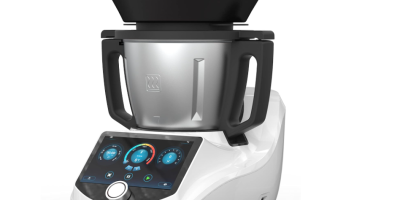Cash-back apps have surged in popularity with tens of millions of shoppers now using these solutions to save big bucks off everyday grocery essentials from milk and eggs to pantry staples and school lunch snacks.
The chance to earn rewards just for buying the usual you already need to stock the fridge, fill the pantry, and nourish their family offers shoppers an almost effortless path to extra grocery savings. Even better, these rewards accrue with each trip and may be paired with savings if they grow to the point of offsetting a large portion of the grocery bill.
If strategically used together in conjunction with coupons, loyalty programs, and sales, grocery cash back apps can help shoppers realize significant annual savings, often adding up to hundreds of dollars on necessities.
This comprehensive guide will get you up to speed on how today’s cash-back solutions work and will provide you with tips to maximize your grocery rewards as a new user.
How Grocery Cash-Back Apps Work?
Grocery cash back apps have users first digitally upload images of store receipts to earn cash back on thousands of products or activate in-app offers based on buying selections from a list of specific brands and items.
Most platforms offer more generous cash back rewards on household names and everyday essentials – up to 25% back on select cereals or 10% back on popular yogurt varieties, for example – aiming to modify consumers’ purchasing behavior and frequencies to increase volumes.
After completing each shopping trip, users simply have to scan their entire receipt and submit it through the app. Rebates and cash back rewards get automatically credited to the user’s account balance.
Once the earnings balance hits a minimum threshold, like $5 or $10, cash can be withdrawn to a linked PayPal or Venmo account or they can be deducted directly from within the app during the user’s next purchase in some cases and with specific vendors.
It’s an effortless extra opportunity to put savings back into your wallet. Meanwhile, unlike couponing, not much advanced planning or strategic matching of promotions is required to put this easy-to-use savings solution into action.
How to Strategically Maximize Earnings with Cash-Back Apps?
While the sheer ease of passively earning rebates is universally appealing, a bit more diligence in strategically stacking savings across multiple platforms can help consumers realize substantially higher rewards.
Here are some top tips for maximizing grocery cash back earnings:
- Activate offers across multiple apps before grocery runs: The same receipt content can be submitted to some platforms without limiting rewards, so cross-compare available deals on your planned grocery purchase list items across possible apps.
- Prioritize store brands and generics when big rebates apply: When buying staple items like milk, bread, and eggs especially, opt for savings on lower priced store and generic brands as rebate apps tend to offer more generous cash back rates on these brands that help offset the cost of the products.
- Buy certain items only when rebates apply: Consider holding off on planned purchases of discretionary grocery items if no current rebate offer applies. Stock up later when new bonuses and rewards are offered through your app(s) of choice.
- Take advantage of seasonal and special rebates: Holidays, big sporting events like the Super Bowl, and changing seasons prompt special and limited rebates. You can keep an eye on the offers available within your cash back app to spot attractive deals on these special events.
- Maximize sign-up and referral bonuses: Earn signup bonuses and then heavily promote your grocery cash back app with all your personal contacts. Sharing a winning system with friends and family can help you earn referral rewards and other perks.
How to Organize and Streamline Savings?
As squeezing every drop of grocery savings out of cash back apps becomes more lucrative with more platforms coming into play, having the right systems to coordinate submissions and track earnings across multiple apps becomes vital.
These steps will help you organize the process to more efficiently exploit all offers that are on the table:
- Consolidate Receipts Digitally: Some services simplify the task of systematically digitizing and submitting receipts to connected platforms. Alternatively, adopt a highly automated manual system for digitizing paper receipts. Apps like CamScanner can help you save time and effort to complete this task.
- Create Reminder Alerts: To meet redemption thresholds and limited-time offers, reminders and alerts help prevent losing track of expiration dates as shifting offers and earnings deadlines vary widely across platforms.
- Maintain an Updated Rebates Dashboard: Use a simple spreadsheet or available templates to actively maintain a consolidated view of all available offers per planned purchases and earnings accrued to keep track of your journey. Quickly identify rebate expirations and the most lucrative promotions per item by using these systems.
- Securely Store Login Credentials: Keep usernames and passwords for each grocery rebate app neatly organized in a password manager app with master password protection for quick and convenient access from any device.
- Cash Out Earnings Strategically: Let balances build for higher redemption gifts when thresholds get closer across apps or cash out incrementally to capture all earnings via PayPal deposits or gift cards that are useful to you.
The Extra Effort Yields Major Savings
While not exactly passive income, a modest amount of planning and coordination across just 2 or 3 specialized grocery cash back apps can easily unlock $40 to $50 or more monthly in cash earnings for the typical household. This results in an average of $500 to $600 per year saved on grocery purchases alone.
Follow the strategies outlined in this guide as you get started and grocery cash back apps may gradually transform into an invaluable personal finance tool for freeing up extra savings that will keep on building.











Comments